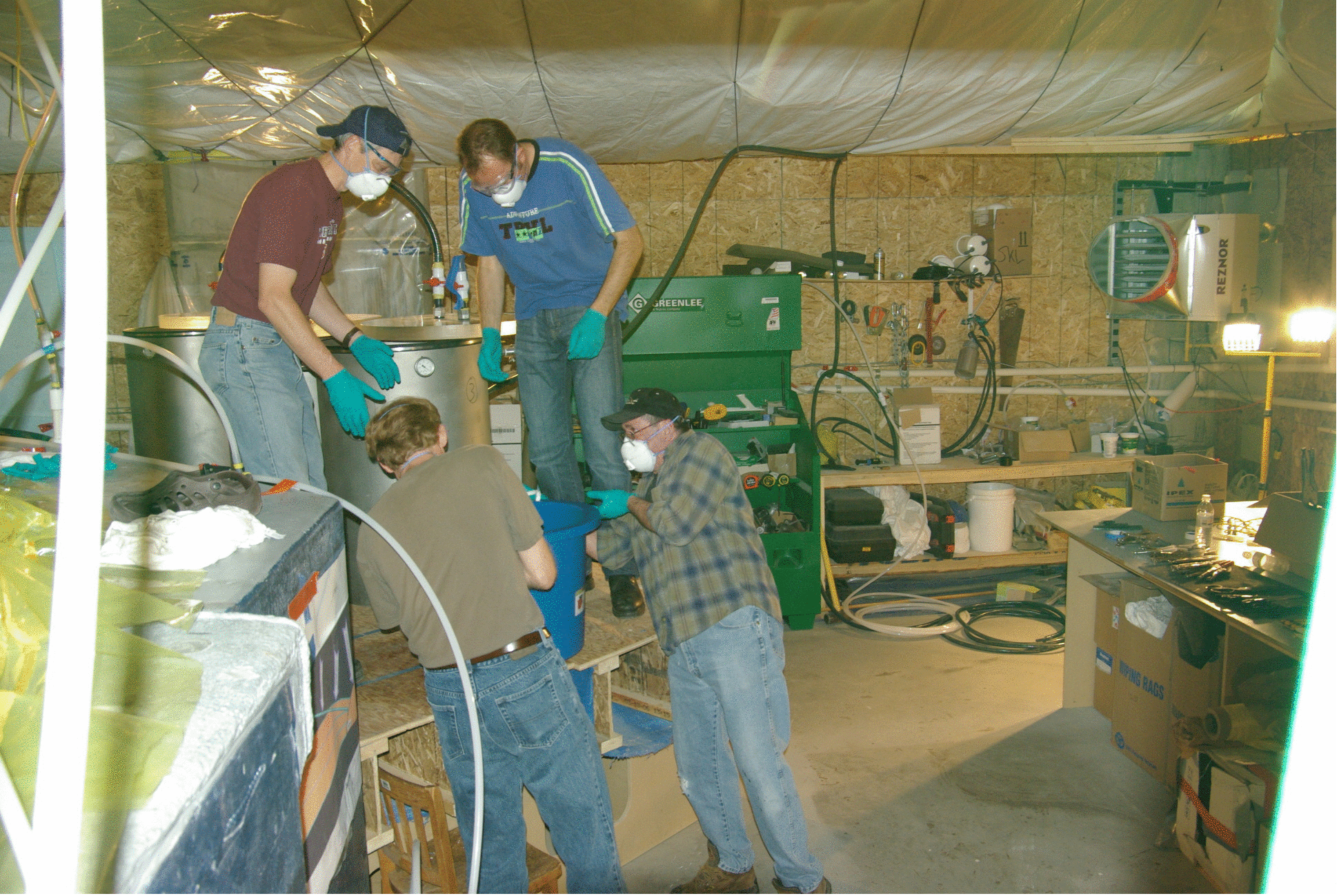Daily Image
09-07-2008A CART without a Horse
| Submitter: | Dean Chalmers and Tony Willis |
| Description: | It is well-known that ASTRON is a world leader in the development of innovative radio-astronomical imaging techniques such as focal plane arrays. Other institutions are world leaders in the development of innovative techniques for building the parabolic dish telecopes that will eventually house the focal plane arrays. As part of the Canadian SKA effort, the Composite Applications for Radio Astronomy (CART) project at DRAO Penticton is researching the application of composite materials, such as fibreglass and carbon fibre, to radio telescope structures. Composite materials consist of fibrous cloth material embedded in a matrix of binding plastic resin. Large high quality structures can be manufactured with composites using a process known as vacuum infusion. Dry fabric and foam core are laid down on the mold and sealed under a plastic bag. The air is sucked out with vacuum, compacting the dry materials. Catalyzed resin is then drawn into the part by the vacuum through a series of hoses and manifolds, filling the part with resin. The process produces high quality (high fibre content and accuracy) parts and is limited in size of part only by the height of the part (~6m). ASTRON's Jan Kragt will be working with the CART group for the next year to gain experience with techniques related to composite materials. He paid a preliminary visit to the group in June and was lucky enough to be able to participate in the vacuum infusion procedure for their second-generation composite parabolic reflector. This reflector will have better surface accuracy and stability than their first generation reflector based on the experiences the group obtained with the first generation reflector over the past year. The photo sequence shows the surface and rim of the new reflector being successfully infused at DRAO on June 4th 2008. The first image shows the beginning of the activity with catalyzed resin being handed up to Jan (blue shirt) and DRAO technician Richard Hellyer. In the second image Jan and Richard pour the resin into the vacuum chamber for degassing and transfer to the part under vacuum. The last image shows the reflector surface part way through the infusion. Resin (dark blue) is being drawn into the dry materials (light blue) of the reflector surface trough radial fill lines. The new reflector is expected to be lifted onto its mount in mid-summer for testing. |
| Copyright: | DRAO Penticton |
| Tweet |  |
